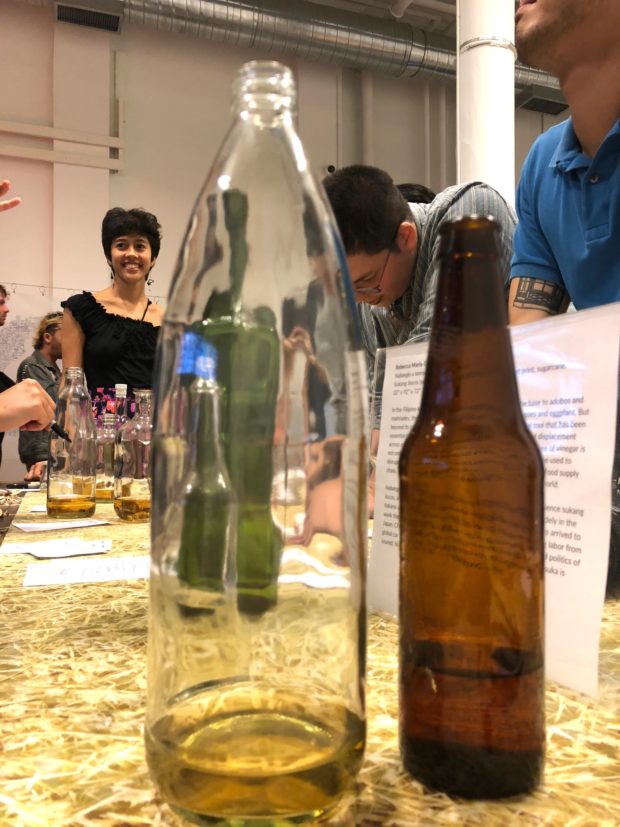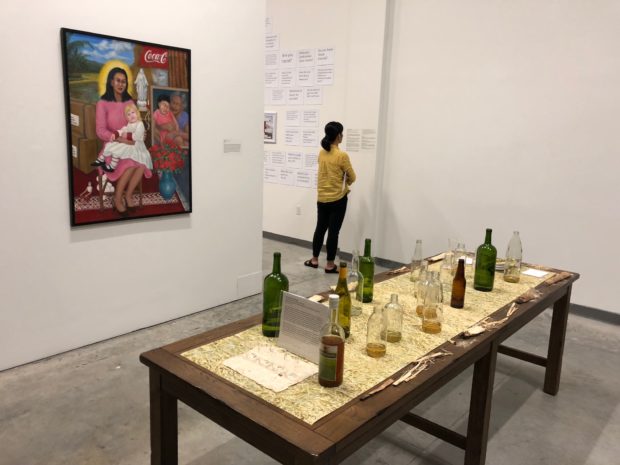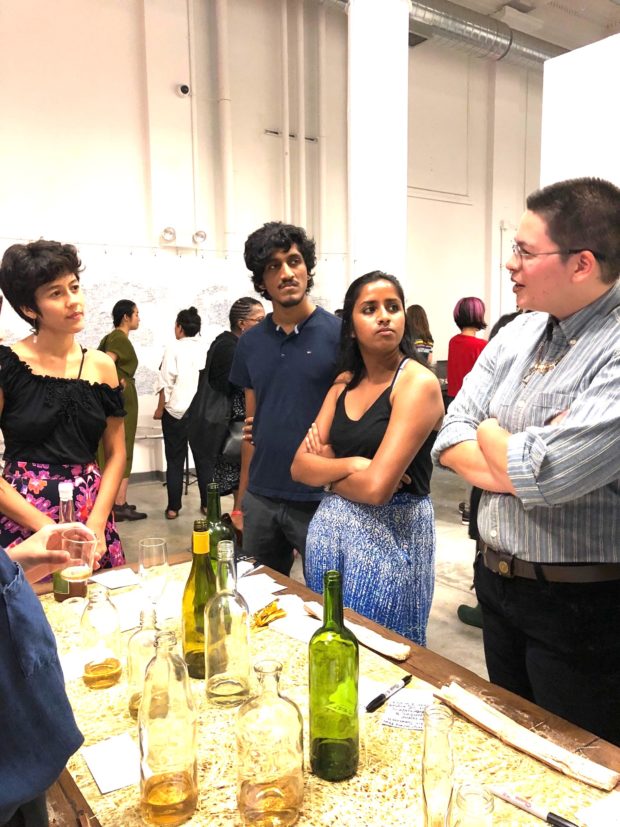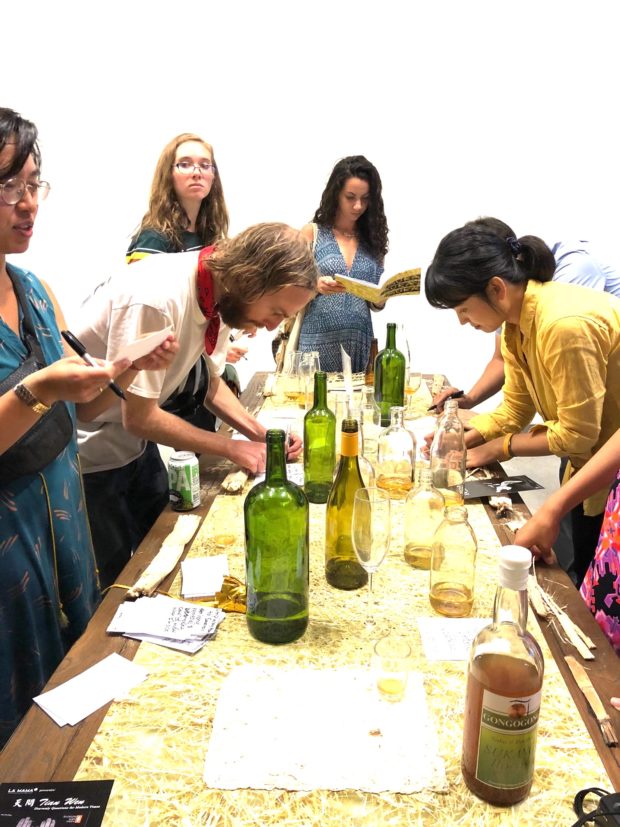Fil-Am artist exhibits the sour from the sweet in ‘Working Conditions’

Artist Rebecca Goldschmidt with her vinegary art installation in “Working Condition” art exhibition in Philadelphia. CONTRIBUTED
Graduate student Rebecca Goldschmidt came to the University of Hawaii to understand the history of Filipinos in the state and to learn more about Filipino American culture. She quickly learned about plantation history and the arrival of first imported sakadas at the turn of 19thcentury. She has distilled her new understanding into art work.
When Goldschmidt came across an open call for the exhibition “Working Conditions” in Philadelphia, she thought her art would fit in perfectly as not many people talk about the kind of labor the sakadas experienced.

Rebecca Goldschmidt’s art installation in “Working Conditions.” CONTRIBUTED
“Working Conditions” is an exhibition at the Asian Arts Initiative in Philadelphia, which showcases ten artists and focuses on Asian American labor. Artists of different backgrounds share works that depict what it means to be an Asian American worker and what Asian American labor has contributed to the United States and the world.
Inspired by the idea of the sugar plantation, Goldschmidt hit on the theme of vinegar; as sugar cane juice transforms through fermentation, it turns into vinegar. It signifies something sweet becoming sour, like the sakada experience.
“The cane is this amazing plant that we Filipinos use, and all of Polynesia has used it for centuries. But it also has this dark side . It requires so much labor that it’s often been used as a tool of oppression when plantations were popping up in the West Indies, Louisiana, Africa, Brazil and all these places that are extensions of imperialism,” the graduate student explained.

Exhibit visitors share their cultural connection with with vinegar. CONTRIBUTED
The piece Goldschmidt contributed to “Working Conditions” symbolizes labor and the transformation of sugar. She inverts the political economy of sugar; while sakada work with sugar was hard, even oppressive, vinegar is something that Filipinos use to protect their bodies, and preserve their food and their culture.
In the exhibit, the Filipino American artist has a long table covered with a print of sugar cane pulp, along with a couple pieces of cane. She also placed several bottles filled with different types of vinegar left open for people to smell, taste, and connect with.
“I ask people how they use vinegar, how it works in their community, neighborhood, and house. It’s not just specific to the Philippines. Everyone uses it, so it has this sort of intercultural function that we can connect with other people. It also reminds us of the sugar plantations and the people who work there.”

Visitors write down comments on Goldschmidt’s exhibit. CONTRIBUTED
Goldschmidt hopes to remind people to include the Philippines in their conversation on labor and labor conditions. She shares the importance of Filipino labor and its experience in the capitalist system.
“Growing up in Chicago, we barely talked about anything Filipino. I just felt like this is research that needs to be brought to an American audience, but also specifically to an Asian American audience because they sometimes forget that Filipinos are Asians.”
“Working Conditions” will be at the Asian Arts Initiative in Philadelphia from September 4, 2018 until December 15, 2018 and is accompanied by a series of public programs related to the topic of labor through poetry, workshops, and musical performance. The artists participating in this exhibition share their perspective of labor through performance, video, painting, installation, sculpture, and mixed media. (To learn more, visit https://asianartsinitiative.org/event/working-conditions.)

